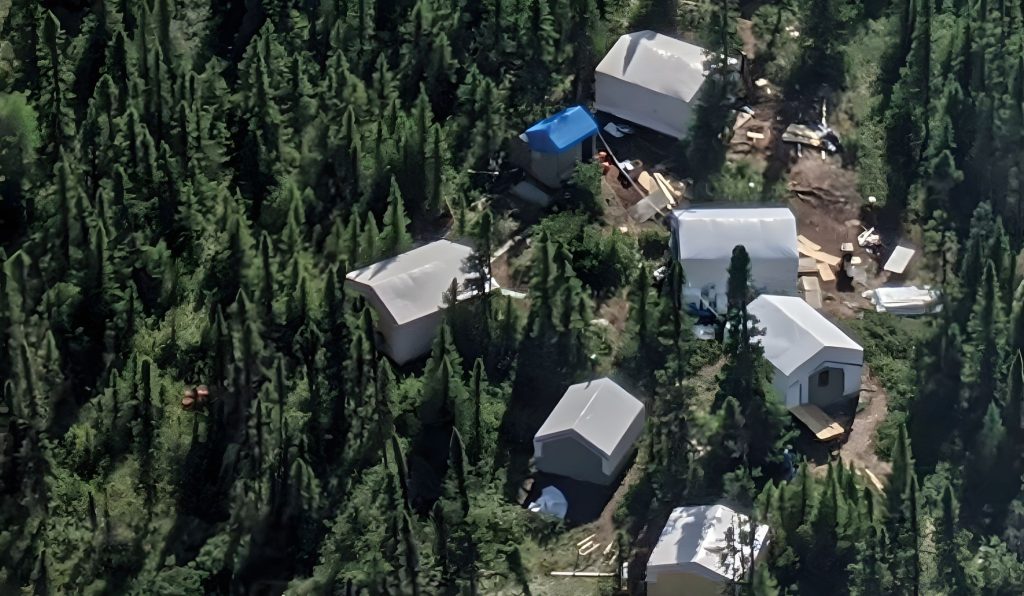Genius Metals completes a high-resolution MAG Survey on its Dissimieux property, Quebec

Genius Metals Inc. [TSXV-GENI] reported that it has completed a high-resolution airborne Magnetic survey on its 100%-owned Dissimieux Phosphate-Titanium-Rare Earth Property, Quebec. The survey carried-out by Prospectair Geosurveys Inc. was completed during May 2024. The company expects to follow-up on the results from this survey with a grab and channel sampling program on defined targets.
The company has completed an 857 line-km high-resolution magnetic survey, covering 39 km2 over its Dissimieux property located 140 km northwest of Baie-Comeau, Québec, Canada. The survey was carried out with traverse lines oriented N303 degrees to properly map the dominant magnetic/geological strike, and with a 50-metre line spacing to generate high-resolution data. This new survey will provide a better definition of the magnetic anomalies that appear to be related to phosphate mineralization.
The company will be reviewing the magnetic survey data over the next month to implement the summer field program which will consist of channel and grab sampling over target areas. This dataset will be released upon processing.
The project consists of 70 claims covering 38.86 km2, and is road accessible via Provincial Highway #138 at Forestville, then driving northward on Highway #385 to Labrieville, and from there a network of secondary gravel forestry roads provides direct access to the property on the east-southeast shore of Dissimieux Lake.
The property hosts titanium-phosphate (ilmenite-apatite) mineralization located near the southern margin of the La Blache Anorthositic Complex (the LBAC). The LBAC is elongated in a northeast-southwest direction and stretches over 60 km by 15 to 25 km wide and was emplaced into a highly metamorphosed and folded package of steeply dipping, north-northeast dipping paragneisses and amphibolites of the Grenville Geological Province.
In 2012 to 2013 Jourdan Resources drilled 34 holes at Dissimieux Lake, for a total of 3949 m, demonstrating mineralization over a strike length of 2.4 km. Five parallel zones of phosphate mineralization were intersected, often with intersections of mineralization greater than 100 metres in drilled thickness.
“Historical Resources” of 235 million tonnes grading 3.65% P2O5 and 4.72% TiO2 were estimated based on the drill core results (Met-Chem, 2000, in GM58569). The estimate is considered an historic Mineral Resource and as such is not NI 43-101 compliant.
Neither has there been sufficient work completed nor has a Qualified Person reviewed or evaluated these historical resources in terms of NI 43-101 standards in Oder for the estimates to qualify as a current Mineral Resource. The Company is of the opinion that the estimates reflect the ilmenite-apatite and titanium-phosphate mineralization potential of the property.
The last major work on the Property was the Met-Chem scoping study (2000, in GM 58569). Met-Chem indicated that the ilmenite-phosphate mineralization was amenable to open-pit mining with a 1:1 ratio of waste to mineralized material. It was proposed to transport the concentrate via a pipeline at a cost of $3.28 per tonne based on a yearly transport of 457,500 tonnes of concentrate (217,500 tonnes of ilmenite and 240,000 tonnes of apatite) over a distance of 140 km.
In 2009, Jourdan Resources assayed a sample from the original apatite concentrate for Rare Earth Elements (REE’s) and Rare Metal analysis at ALS Laboratories using the 38 element ICP-MS Analytical Method (ME-MS81). The apatite concentrate sample contains 0.18% TREE’s, of which 72% are LREE’s (Light REE’S: La, Ce, Pr, Nd, Pm, Sm) and 28% are HREE’s (Heavy REE’s: Eu, Tb, Dy, Ho, er, Tm, Yb, Lu, Y).
The most significant REE’s results are 517 ppm Cerium (Ce), 66 ppm Dysprosium (Dy), 115 ppm Gadolinium (Gd), 169 ppm Lanthanum (La), 405 ppm Neodynium (Nd), 85 ppm Praseodymium (Pr), 98 ppm Samarium (Sm), 521 ppm Strontium (Sr) and 348 ppm Yttrium (Yt).
